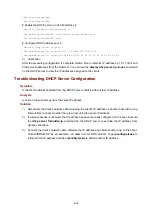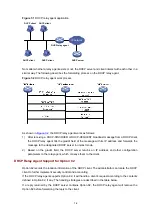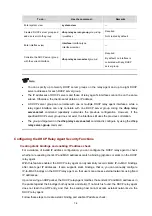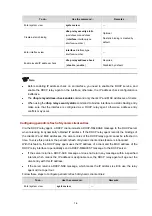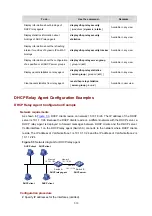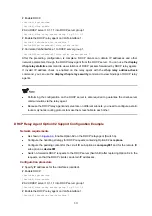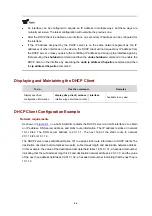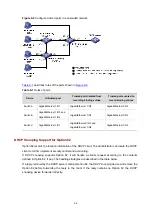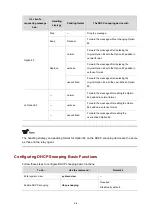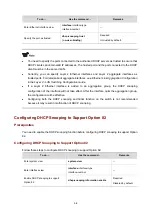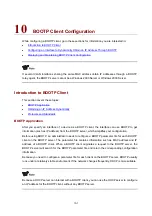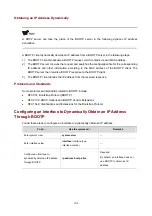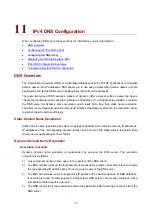
8-2
z
An interface can be configured to acquire an IP address in multiple ways, but these ways are
mutually exclusive. The latest configuration will overwrite the previous one.
z
After the DHCP client is enabled on an interface, no secondary IP address can be configured for
the interface.
z
If the IP address assigned by the DHCP server is on the same network segment as the IP
addresses of other interfaces on the device, the DHCP client will not request any IP address from
the DHCP server, unless you delete the conflicting IP address and bring up the interface again by
first executing the
shutdown
command and then the
undo shutdown
command or re-enable the
DHCP client on the interface by executing the
undo ip address dhcp-alloc
command and then
the
ip address dhcp-alloc
command.
Displaying and Maintaining the DHCP Client
To do…
Use the command…
Remarks
Display specified
configuration information
display dhcp client
[
verbose
] [
interface
interface-type interface-number
]
Available in any view
DHCP Client Configuration Example
Network requirements
As shown in
, on a LAN, Switch B contacts the DHCP server via VLAN-interface 2 to obtain
an IP address, DNS server address, and static route information. The IP address resides on network
10.1.1.0/24. The DNS server address is 20.1.1.1. The next hop of the static route to network
20.1.1.0/24 is 10.1.1.2.
The DHCP server uses self-defined Option 121 to assign static route information to DHCP clients.The
destination descriptor field comprises two parts, subnet mask length and destination network address.
In this example, the value of the destination descriptor field takes 18 14 01 01, a hexadecimal number
indicating that the subnet mask length is 24 and destination network address is 20.1.1.0, and the value
of the next hop address field takes 0A 01 01 02, a hexadecimal number indicating that the next hop is
10.1.1.2.

